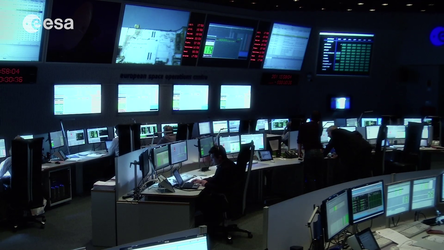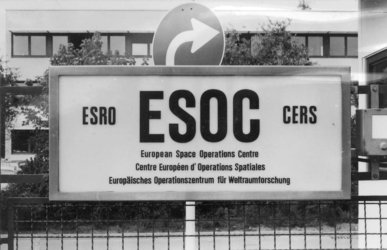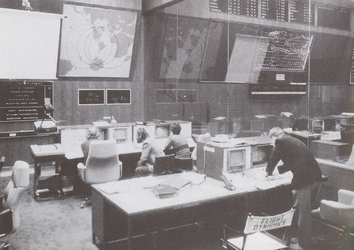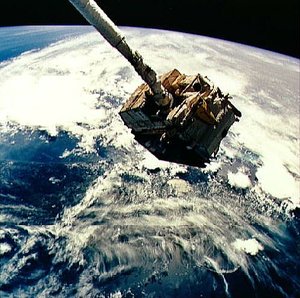ESA pays tribute to ESOC's 40th anniversary
In September 1967, the European Space Operations Centre was formally inaugurated in Darmstadt, Germany, to provide satellite control for the European Space Research Organisation, today known as ESA. ESOC began just a decade after the 1957 start of the space age, when the Soviet Union launched Sputnik 1, the first artificial satellite.
When the Sputnik news hit the world's press in 1957, it was hailed as the achievement of a dream, the first tentative step by mankind into the cosmos. Humanity would no longer be stuck on our home planet, and we could now travel - if only robotically - in realms previously reserved for Gods and mythic figures.
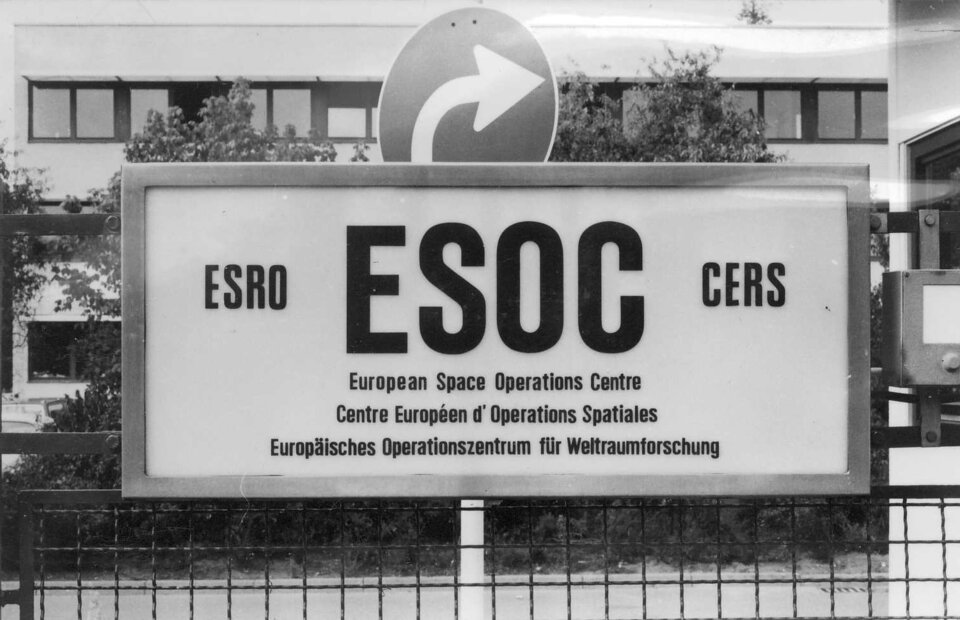
It was also a shock, as the United States and its Western Allies - locked in Cold War competition with the Soviets - suddenly realised how far behind their space efforts had fallen. Political leaders in the US and Europe quickly voted huge budgets to close the space technology gap. Throughout the 1950s and 1960s, the globe's two competing geopolitical blocs used rockets, ever more powerful boosters and increasingly sophisticated satellites as their proxy weapons to achieve superiority. The competition culminated, finally, with the race to put a human on the Moon, won handily by the Americans in 1969.
Europe cooperates for space
In 40 years, satellites controlled from ESOC have voyaged deep into our Solar System, exploring not only our home planet, but also the Moon, the Sun, Venus, Mars and Titan.
While this US-Soviet space duel unfolded, other countries and organisations developed their abilities to place satellites into orbit for scientific research and applications such as weather forecasting, telecommunications, TV and resource management.
In Europe in 1962, the European Space Research Organisation (ESRO), one of the two precursors of today's ESA, was founded (the other was the European Launcher Development Organisation - ELDO).
By 1968, ESOC was already controlling its first mission

The facility known as ESOC, the European Space Operations Centre, had been established in the fall of 1963 as ESDAC, the European Space Data Centre; with the renaming and re-purposing for spacecraft operations, the centre and its 90 staff moved to a new facility located on the West side of Darmstadt. ESOC was opened on 8 September 1967 by then Minister of Research of the Federal Republic of Germany, Gerhard Stoltenberg.
By May 1968, ESOC, as part of ESRO, was already conducting its first operations, controlling ESRO-2B, a scientific research satellite and the first in a long series of successful missions operated from ESOC for ESRO, and later ESA.
The establishment of ESOC and the subsequent evolution of ESRO and ELDO into ESA with the Ariane launcher programme proved that Europeans working together could not only build satellites and boosters, but could also operate sophisticated missions as well. In the past 40 years, robotic satellites controlled from ESOC have voyaged deep into our Solar System, exploring not only our home planet, but also the Moon, the Sun, Venus, Mars and Titan - a moon of Saturn and the most remote place ever reached by a man-made object.
Computer-filled rooms
Today, the computers and networks at ESOC have little in common with systems of the 1960s and 1970s.
Back in the 1960s, the technology used at ESOC to operate missions is hardly imaginable to the cell-phone-toting, home-computer-using, high-speed-Internet citizens of today. Computers filled rooms and were commanded not by a keyboard but by punch cards, with coded characters laborious punched into stacks and stacks of them.
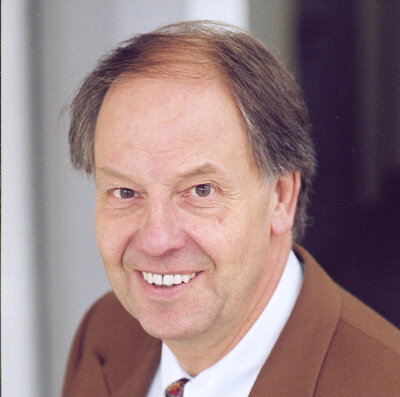
"Young ESOC engineers of today cannot imagine that we had to train with and actually use these devices to calculate orbits," says Siegmar Pallaschke, a flight dynamics analyst who joined ESDAC/ESOC in 1966.
He recalls that, in the early days, everything was focused on low- and near-Earth orbits - or on flying to the Moon. "Sure, we knew one day we would be able to do a mission to Mars or Venus, and in fact we are doing so. But to fly to a comet - like Rosetta - that was only a dream."
By the mid-1980s, ESOC was already controlling a complex comet hunter, Giotto, ESA's first deep-space mission. Tracking spacecraft through complex trajectories millions of kilometres away and receiving huge amounts of valuable scientific data from on-board instruments have required new methods, hardware and software; ESOC has had to constantly upgrade as the mission demands have increased.
Today, the computers and networks at ESOC have little in common with systems of the 1960s and 1970s.
ESA's centre for flight operations
The centre is today ESA's ground segment hub, with dedicated control rooms for each of the 13 spacecraft now in operation, and separate control rooms for computer networks and for ESA's ESTRACK ground tracking station system. The global network of eight ESTRACK stations includes two giant 35m antennas in Australia and Spain; all engineering and design work for these marvellous devices is also done at ESOC.
ESOC is also a hub for software development, as the complexity and sophistication required for mission control systems grows from one mission to the next. The decades have further proven that many activities in space can only be achieved through international cooperation. This realisation came to fruition in Europe with the 15 April 1975 establishment of ESA.

Jean-Francois Kaufeler, responsible for ground systems infrastructure at ESOC, remembers his initial years at ESOC - and the start of the ESA era: "I have always been impressed by the cooperation here between people of different nationalities, different cultures and individual work styles. Today, the level of mutual understanding has progressed much further and cooperation is easier."
Kaufeler sees this as an advantage for the future of ESOC: "In the future, we will continue sharing the expertise of engineers and scientists from different nations and build ever closer cooperation."
ESOC: passion for humanity's voyages into the universe
While Sputnik kicked off a space race lasting more than three decades, it also enabled us to see our home planet as an interconnected ecosystem - a view that continues to animate much of ESA's space efforts today. Our ascent into space also led to another, more stark realisation: nowhere else have we found a planet that is hospitable for humans. The home we have is the only home we've got.
For another 40 years, the team at ESOC looks forward to linking people with spacecraft at the frontiers of human knowledge. Our world continues to be about people, communication and exploration, while our passion is for humanity's voyages into the universe.




